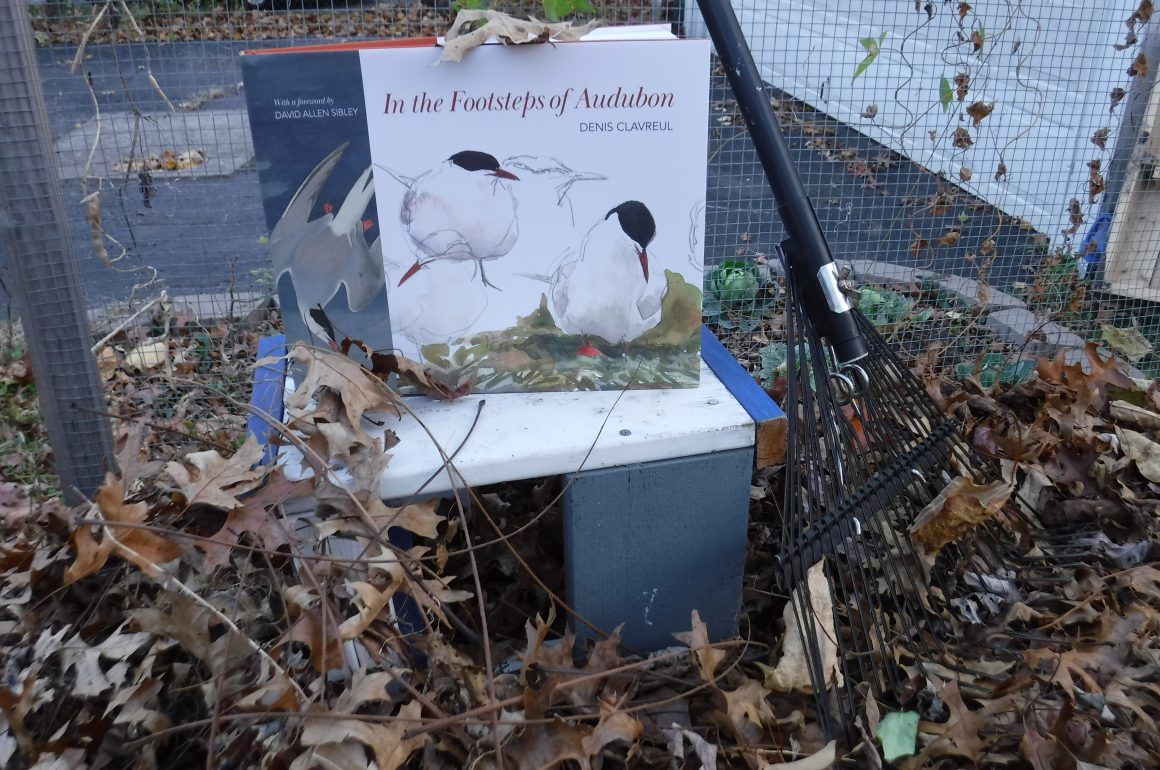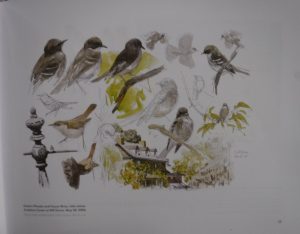
Denis Clavreul, artist, biologist, and Frenchman, got it into his head to follow the same paths blazed, in the first part of the nineteenth century, by John James Audubon, also an artist and also a Frenchman (born in Haiti) — though not much of a biologist or naturalist. The result is this large and handsome book, an homage, In the Footsteps of Audubon, with exquisite watercolors and entertaining and evocative writing.
In order to create his dramatic, masterly paintings, eventually reproduced and issued under the title The Birds of America, Audubon traveled, at various points in the first part of the nineteenth century, across Pennsylvania and down the Ohio and Mississippi Rivers to Louisiana; along the Atlantic Coast from Charleston, South Carolina to the Florida Keys; to New England and then Labrador; and along the Missouri River into the Dakotas. Each chapter of Clavreul’s book covers his revisitation of one of these extended Audubon trips, with a final chapter covering New York City, where Audubon first set foot on American soil, in 1803. (His trip to Labrador was the subject of another fine book, Audubon: America’s Greatest Naturalist and His Voyage of Discovery to Labrador, by Peter B. Logan, reviewed previously on this site by Carrie.)
Clavruel’s book is not a day-by-day recreation of Audubon’s various itineraries, but rather a loose investigation of “regions and birds unknown to me,” he says, prompted by his “desire to meet and sketch people who live each day in contact with nature.” But most of the book “is more a selective meditation on Audubon and history,” as David Allen Sibley says in his admiring Introduction.
So Clavruel uses the facts of Audubon’s life from time to time, as appropriate, with occasional references, for example, to his, and his wife Lucy’s, diary entries and letters. Sometimes, in those rough and primitive days, their luck was good: as Lucy wrote about their flatboat trip down the Ohio River from Pittsburgh, past Wheeling and Cincinnati, to Louisville, “the seven hundred miles by water was performed without much fatigue though not without some disagreeables.” They couldn’t use sails, she says, because “the many turns on the river . . . brings the wind from every quarter in the course of an hour or two.” (Their trip took ten days; Clavruel’s, mostly by car, was somewhat quicker.)
But the main attraction of the book, it must be said, is not Clavreul’s prose but his artistry in watercolor. Birds, mammals and other wildlife, humans and landscapes are all rendered magnificently. Maybe that’s so because he worked entirely from life and not photographs, he says. Here are a bunch of his Eastern phoebes and House wrens surrounding Audubon’s house in Mill Grove, Pennsylvania (“ever to me a blessed spot,” Audubon called it); it’s now an adjunct of the John James Audubon Center.

Audubon is an outsized figure in American history, and ornithology, but is not universally admired. Some ornithologists regard Audubon as a great artist and some artists regard him as a great ornithologist, as author Jack E. Davis points out in his book published earlier this year, The Bald Eagle: The Improbable Journey of America’s Bird. On the other hand, Davis is, of course, a big fan of the Bald Eagle, as Audubon was not.
The prose of In the Footsteps of Audubon is a translation from the French, with the occasional quirks that such translations often seem to have, most of them unnoticeable except to pedants. (The plural of carp, for example, the fish and noun, is not carps but carp — that kind of stuff.) Fortunately watercolor needs no translation, and what Clavreul calls his “long companionship with Audubon” has resulted in a lovely book, with paintings that are “the visual equivalent,” (to borrow, once again, from David Allen Sibley’s Introduction) “of poetry.”
___________________________________________________________________________________________________
In the Footsteps of Audubon. Denis Clavreul. Princeton University Press. 237 pp., $39.95, £30.00, November 1, 2022. ISBN: 9780691237688 (hardcover); ISBN 9780691241555 (ebook).













Leave a Comment